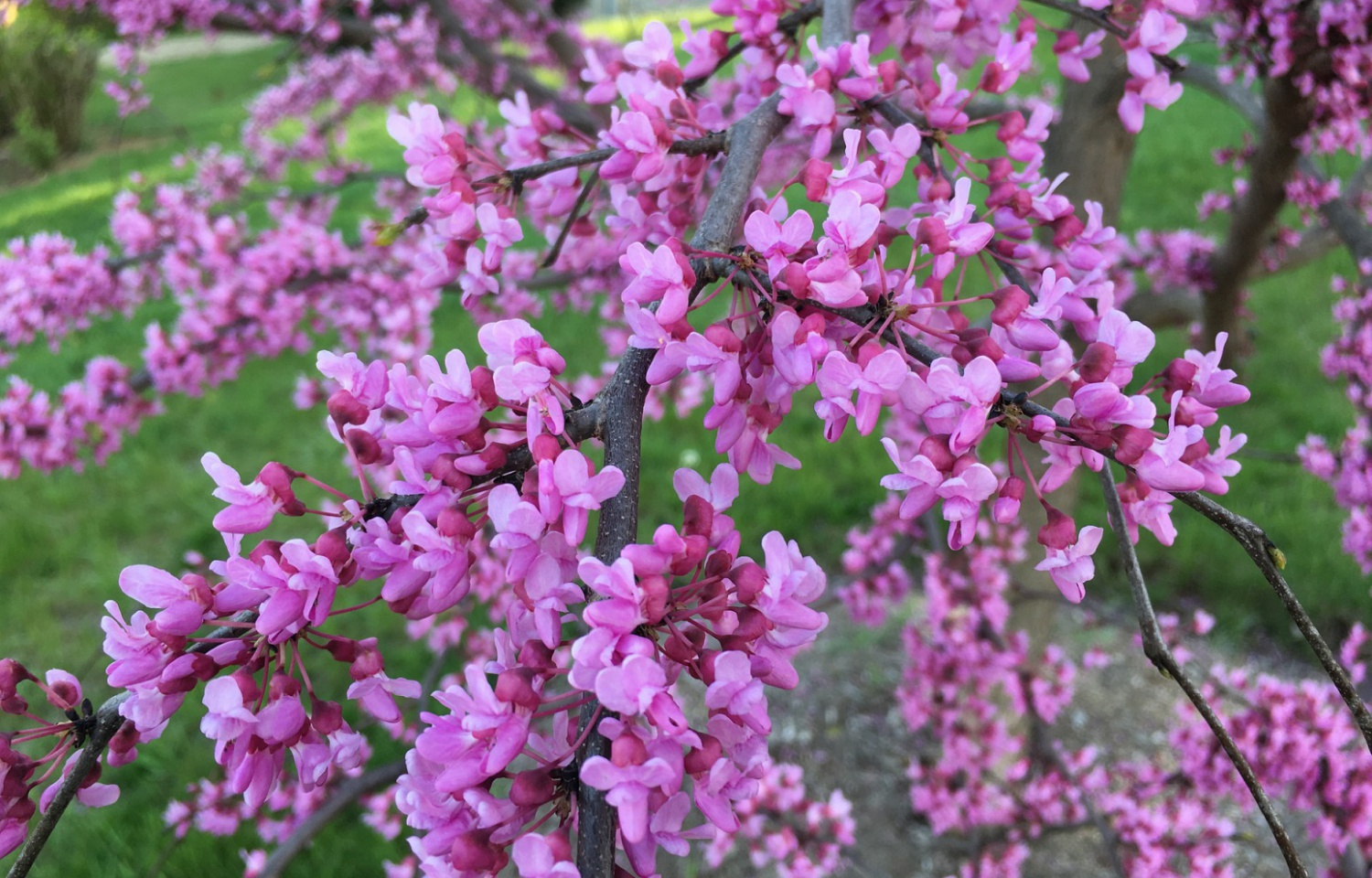
So Many Native Trees for You This Spring
There is one undisputed reason to plant natives, and it’s a big one. Native plants are the basis of the food chain for all other native wildlife. No matter what animals you like, be it butterflies and birds for casual watching to deer and turkeys for hunting, they all rely directly or indirectly on the native plants of our region for food and shelter. Even if you don’t notice it, native plants support the smallest creatures with their flowers, leaves, and fruit, which in turn become food for larger and larger animals. The wild food chain relies on native plants. The insects and animals that eat them all evolved together with these plants and are often the only possible food source for these interesting critters.
Helping out our local wildlife doesn’t mean giving up on gardening as you know it. Native plants and non-invasive exotics can grow happily side by side in your wildlife friendly garden. A great way to get the most bang for your buck is to introduce native trees. As far as your landscape is concerned, trees have an outsized impact on your local micro-environment. They’re the largest footprint in the garden, and since they grow vertically, they occupy the vast majority of the volume in any space. A single tree can be a home for wildlife, provide nectar and pollen with spring flowers, and feed insect larvae on summer leaves. Trees nourish animals with fall fruit and blanket the ground with leaf mulch in the fall, to feed worms and all manner of ground dwelling creatures that enrich our soils.
Native trees come in a wide array of growth habits and have many great features. We stock a huge selection of native trees in the spring, here at Tallahassee Nurseries. No matter what area you have that needs shade and beauty, we’ve got a native choice that’s right for you. Brush up on your options now, then come in to take a look at these lovely plants. Our knowledgeable staff can provide personal advice to make your yard a haven for your favorite wild friends.

Small Growing Native Trees 10’-20’
Mayhaw- White spring flowers in clusters, like pear blossoms. Red fruits ripen by summer. Makes a beautiful small patio tree.
Chickasaw Plum- White spring flowers turn to small dark blue fruits by late summer.
Red Buckeye- Large panicles of red trumpet blooms in spring. Great for early hummingbirds.
Fringe Tree- Large sprays of frilly white blooms in spring, dark black drupe in fall. Excellent replacement for ailing Dogwood Trees.
Yaupon Holly- Evergreen shrub that can be trimmed up into a small tree. Easy to prune and shape into single or multi-trunked tree. Spring flowers and bright red fall berries.
Leucothoe- Evergreen, can be trimmed as a shrub or allowed to grow into a small graceful tree. White spring flowers and glossy textured leaves.
Crabapple- A must for clouds of pink and white spring flowers followed by miniature apples ready in the fall.
Wax Myrtle- Evergreen, can be maintained as shrub or allowed to grow into small tree. Fuzzy blooms in spring will produce fragrant waxy berries by fall on female plants.

Medium Growing Native Trees 20’-40’
Sabal Palm- Evergreen palm tree found growing in and around the coast. Very large flower stalks lead to thousands of dark black seeds. Hanging thatch can be home to small bats.
Redbud- One of the more stunning spring blooms around Tallahassee. Redbud flowers can be light pink to dark purple and are followed by a flat seedpod reminiscent of a snow pea.
Red Cedar- Evergreen juniper produces a waxy berry. Very useful screening plant and safe home for birds.
Catalpa- Showy spring flowers are pink and white then turn to long seed pods. Catalpa is the Fisherman’s Tree, a certain native caterpillar that feeds on its leaves is said to be the best bass fishing bait nature provides.
Savannah Holly***- Stately evergreen with small white flowers in spring and bright red berries for fall and winter.
Spruce Pine- Densely branched evergreen holds branches low to the ground generally until pruned off. Pinecones are food for many animals. Can grow much larger but it takes a very long time. Sturdy pine for smaller spaces.

Large Growing Native Trees 40’+
Bald Cypress- Can be grown in wet areas or average soil where it usually does not produce knees. Very small yellow blooms in early summer lead to knobby round pods in the fall. Very deep roots and a fluted trunk make this one of the strongest large trees around.
Oak- Evergreen and deciduous species in stock. Spring flowers produce copious pollen and fall brings nutritious acorns loved by many mammals!
Tulip Poplar- Very fast growing, spring flowers are like little jewels of orange and green. Fall brings brown seed pods favored by birds.
Pecan- Leaves and nuts are food for many organisms, including people!
Longleaf Pine- The cornerstone of our region’s pre-European ecosystem. Tall growing and long lived trees provide shelter and food for many.
As of March 1, 2016, this entire list is in stock in various sizes. The rest of the year will see selections come and go but make this list a reference point for your gardening. All of these choices have flowers that benefit honeybees and our native pollinators, as well as a fruit fed on by birds and mammals. Add to that the massive quantity of insects supported by the foliage that feed other creatures, and you can start to see just how much wildlife you can help by planting a tree.
Watering Instructions
Even though these plants are all natives, they will need plenty of love and care for their first years, to become happily established. Container grown plants have their roots all in one spot, and, more than anything else, need sufficient water until they’ve developed a more extensive root system.
Apply at least 1 gallon of water slowly and directly to the root ball every 2 days for the first spring and summer. Apply at least 1 gallon of water slowly and directly to the root ball every 4 days for the first fall and winter. Only rain over ¼ inch counts as a watering. The second year watering needs will reduce. Water when the leaves first show signs of wilting.
***Savannah Holly is a hybrid of the two native species (Ilex opaca x Ilex cassine) that occurred naturally in the wild.
*This article was written by Jonathan Burns (Tallahassee Nurseries Outdoor Manager, FNGLA Florida Certified Horticulture Professional) using information published by the University of Florida combined with years of personal observations growing in the Tallahassee area.

